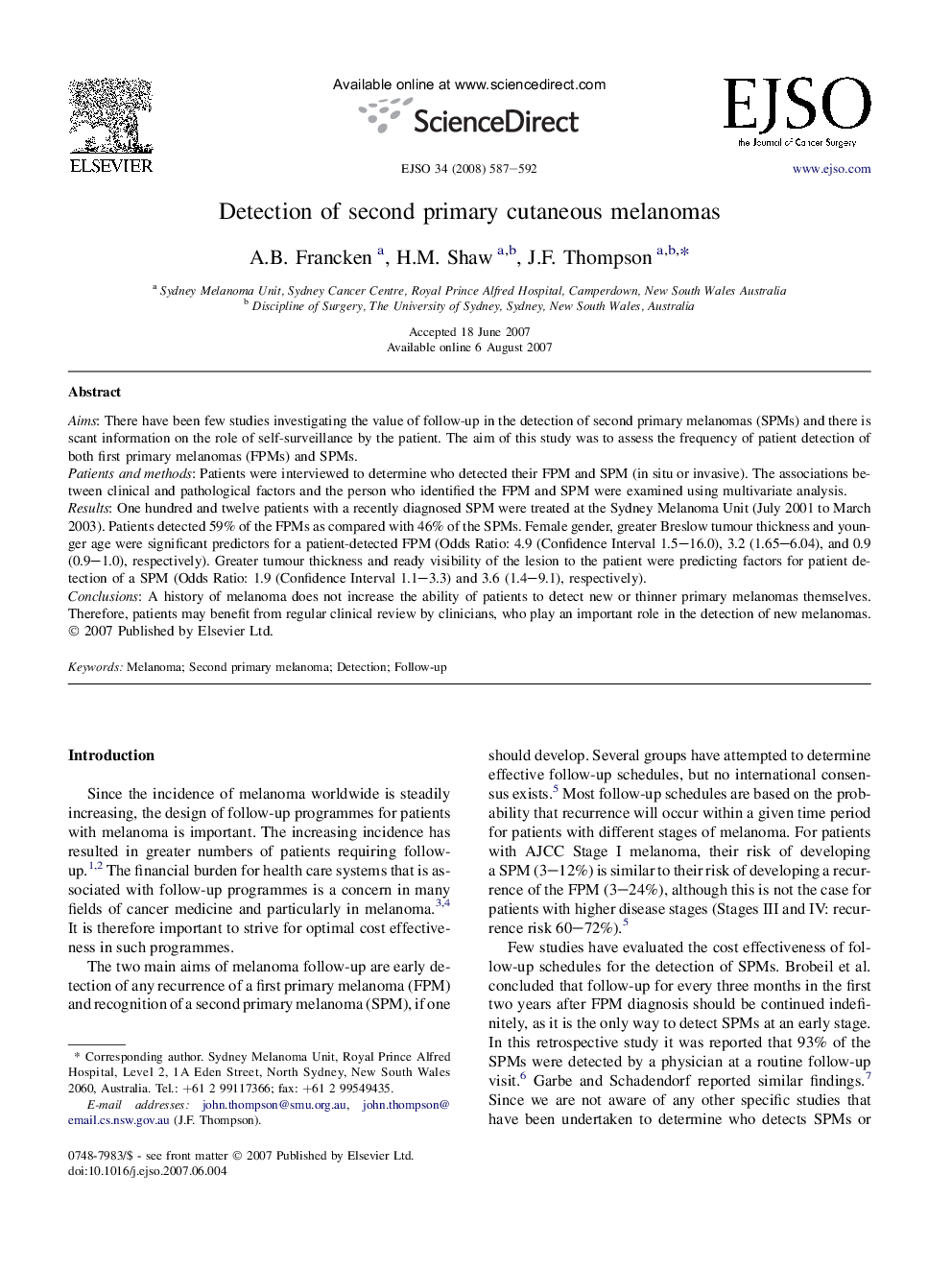| Article ID | Journal | Published Year | Pages | File Type |
|---|---|---|---|---|
| 3988287 | European Journal of Surgical Oncology (EJSO) | 2008 | 6 Pages |
AimsThere have been few studies investigating the value of follow-up in the detection of second primary melanomas (SPMs) and there is scant information on the role of self-surveillance by the patient. The aim of this study was to assess the frequency of patient detection of both first primary melanomas (FPMs) and SPMs.Patients and methodsPatients were interviewed to determine who detected their FPM and SPM (in situ or invasive). The associations between clinical and pathological factors and the person who identified the FPM and SPM were examined using multivariate analysis.ResultsOne hundred and twelve patients with a recently diagnosed SPM were treated at the Sydney Melanoma Unit (July 2001 to March 2003). Patients detected 59% of the FPMs as compared with 46% of the SPMs. Female gender, greater Breslow tumour thickness and younger age were significant predictors for a patient-detected FPM (Odds Ratio: 4.9 (Confidence Interval 1.5–16.0), 3.2 (1.65–6.04), and 0.9 (0.9–1.0), respectively). Greater tumour thickness and ready visibility of the lesion to the patient were predicting factors for patient detection of a SPM (Odds Ratio: 1.9 (Confidence Interval 1.1–3.3) and 3.6 (1.4–9.1), respectively).ConclusionsA history of melanoma does not increase the ability of patients to detect new or thinner primary melanomas themselves. Therefore, patients may benefit from regular clinical review by clinicians, who play an important role in the detection of new melanomas.
